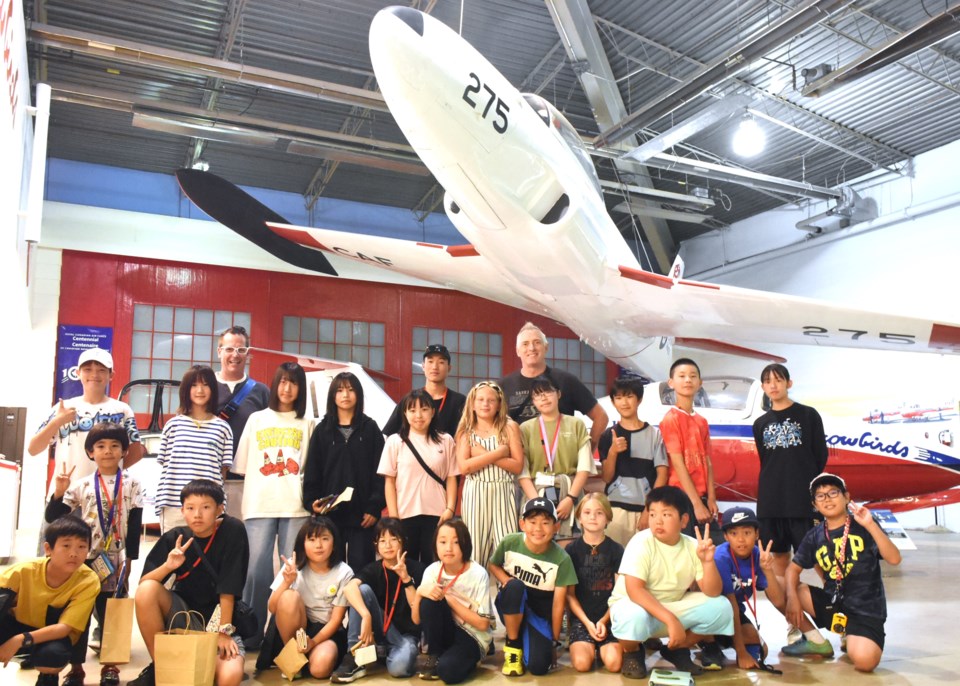In the spirit of omotenashi — Japan’s renowned display of hospitality — and to bridge the cultural gap between east and west through an exciting student program, 19 Japanese elementary-level student ambassadors are touring Moose Jaw from July 25 to Aug. 2.
“Every year we bring back some of our students from Spike & Ai International out of Yokohama, Japan,” explained Arron Dobrescu, the school’s founder and CEO — and former Moose Javian.
These students get the opportunity to visit Canada for one week and range from nine to 15 years of age with anywhere between 15 to 25 students participating.
“The focus is… (letting) these kids experience a different culture and a different way of living,” Dobrescu said.
Dobrescu was born in Moose Jaw and has been living in Yokohama, Japan for the past 22 years.
“I’m a teacher by trade,” he said. “Just before I started teaching, I wanted to see… the world and I moved to Japan and I started teaching there. About two years later, my wife and I started up a school.”
The school, Spike & Ai International, has been running for 17 years and has grown to around 750 students with around 12 teachers.
When the students first arrived in Canada they did a layover in Vancouver, which is still reminiscent of home as it’s situated next to the Pacific Ocean. This sense of familiarity changed when they passed over the Rocky Mountains and entered the vast landscape of the Canadian Prairies.
“They’re like, ‘There are no houses here!’” Dobrescu recalled. “They just can’t fathom the size of Canada, like the landmass is just amazing. You could pick up the whole country of Japan and just put it right in Saskatchewan…
“They think Moose Jaw is just so big, because everything is so spread out,” he continued. “Our roads are really wide… everything’s just so big right down to the food…”
To locals, the Prairie landscape doesn’t seem out of place but for the Japanese students, on the other hand, it’s an astonishing contrast. Yokohama has a population of around four million (as of 2015), and nearby Tokyo has around 14 million residents (as of 2021).
“So, if you think about it, they’re looking at 25 million people (in the region) and not much green,” Dobrescu said.
After a 26-hour flight, the students met their host families for an introductory icebreaker and created souvenir scrapbooks.
The students began their visit with a walk through Crescent Park and then played their first-ever hockey game at A.E. Peacock Collegiate.
“They’ve never seen a hockey stick and they don’t understand the game,” he said. “They love it. It was a good time.”
Culinary differences include something as unsuspecting as a bagged lunch. In Japan, the closest approximation is a Bento box, which traditionally comes decorated with peeled and sliced apples, cooked vegetables, and rice. Here, the students were amazed to find a raw, unpeeled apple, raw vegetables and dip, yogurt, and a sandwich in a brown paper bag.
At least one student was hesitant to try venison, but Dobrescu explained that it’s no different than horse meat (Basashi) which is a culinary option in Japan.
“(Canadian meals are) totally different in style, but there’s no complaints; they love it all.”
On July 29, the group visited the Western Development Museum. Dobrescu called them around his table after lunch where they were astonished to hear their voices come across the radio — the result of an earlier visit to a local radio station.
They later toured the Babich farm where they experienced industrial agriculture on a scale they’ve never witnessed before, and got to take some of the equipment for a quick ride.
Dobrescu included a tour of where he grew up, which is a completely different experience he said the students loved to learn about.
“I showed them my elementary school and say, ‘See? I played on that playground,’” he said.
On Thursday, Aug. 1, students and their host families will sit down for a final sayonara (goodbye) party.
“The kids get to show their tea ceremony, some origami, and different kinds of Japanese cultural things they do and share that with their host families,” Dobrescu explained.
The program is made possible thanks to support from Tana Arnott, Peacock’s principal, and the host families who welcome one or two students into their lives each summer.
For more information about Dobrescu’s school, visit SpikeAndAi.com.




